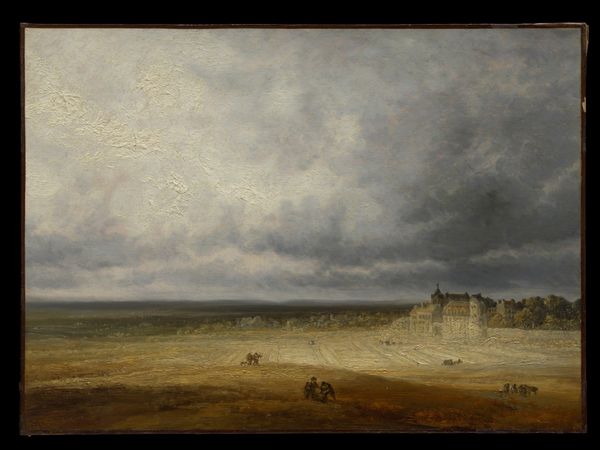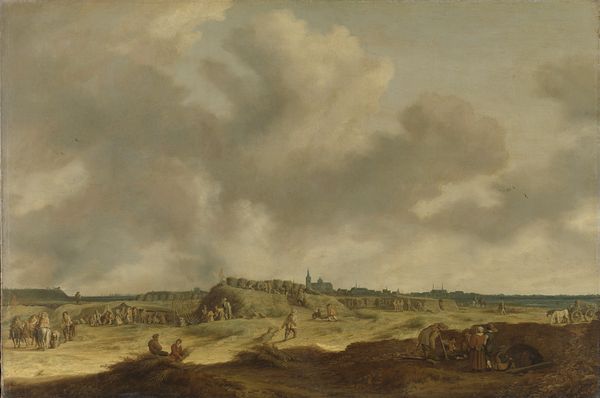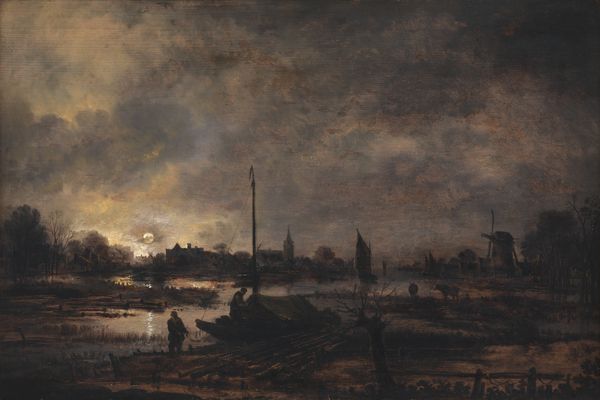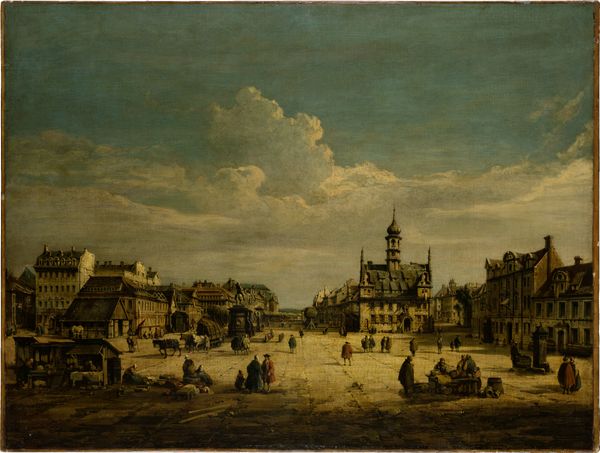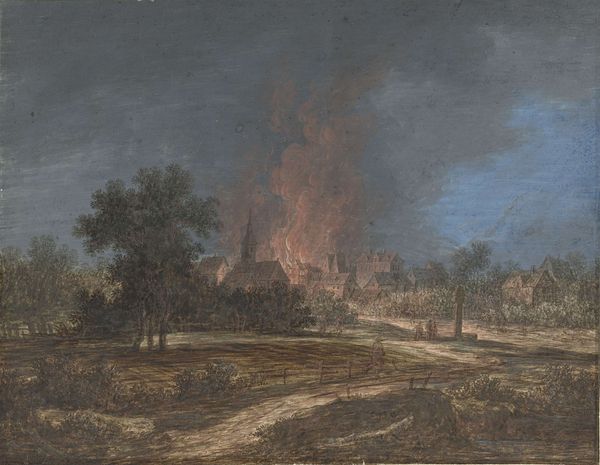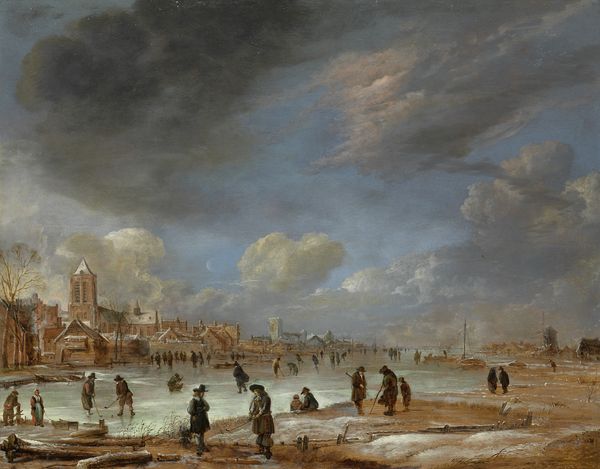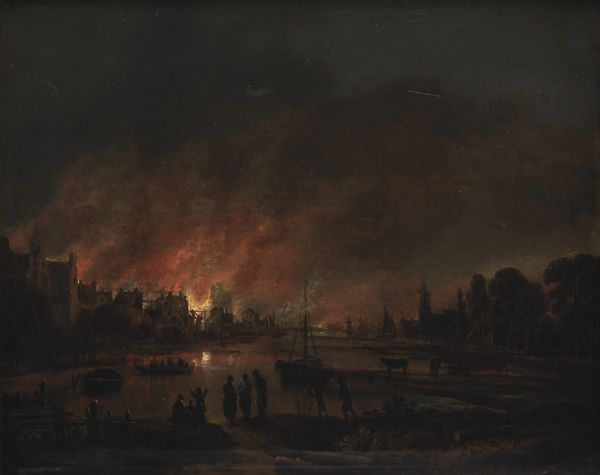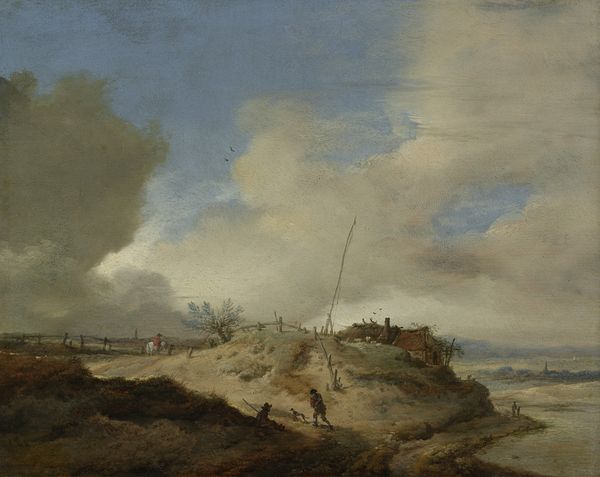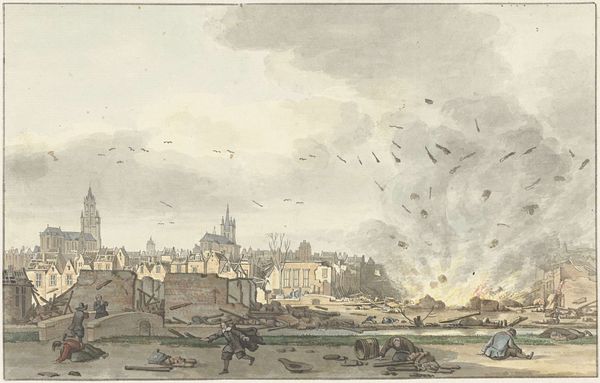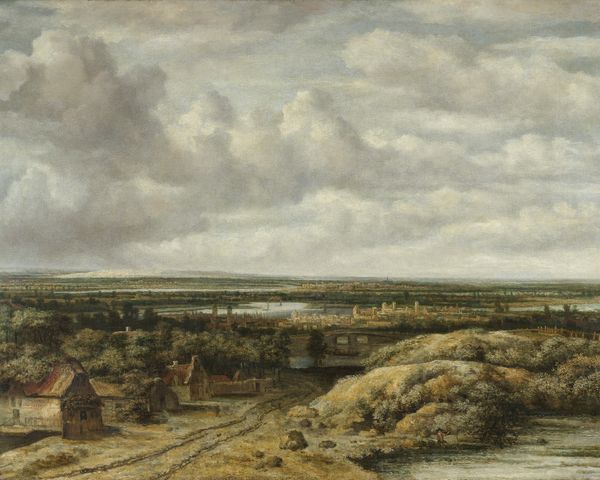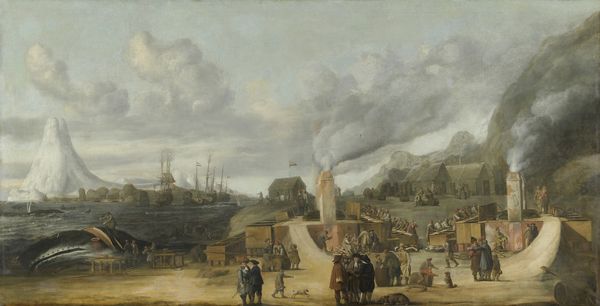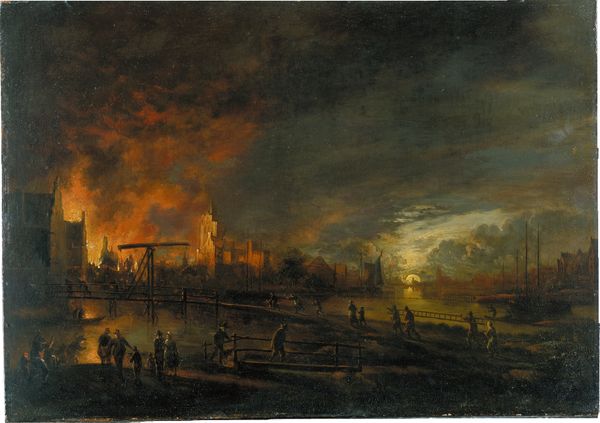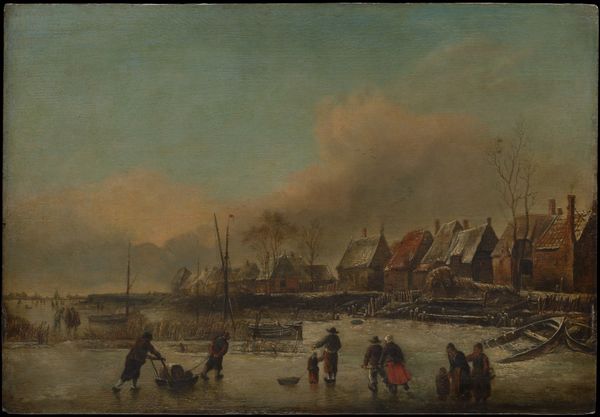
The explosion of the powder magazine in Delft, 12 October 1654 1654 - 1660
0:00
0:00
painting, oil-paint
#
narrative-art
#
baroque
#
dutch-golden-age
#
painting
#
oil-paint
#
landscape
#
cityscape
#
genre-painting
#
history-painting
#
realism
Dimensions: height 37 cm, width 62 cm
Copyright: Rijks Museum: Open Domain
Egbert van der Poel captured the devastating Delft explosion of 1654 with oil on canvas. The scene is dominated by the ominous cloud rising from the ruins, a powerful symbol of destruction and chaos. Consider the ever-present imagery of the apocalypse. The Book of Revelation, painted by countless artists, shows a world consumed by divine retribution, often visualized through fire and crumbling structures. Van der Poel's scene echoes this motif, but without overt religious symbolism. Instead, we witness a secular apocalypse, a disaster born not of divine will but human fallibility. Note the fleeing figures in the foreground. Their frantic movements and expressions of terror represent humanity's primal response to catastrophe. This gesture of flight is an archetype, seen in depictions of natural disasters throughout art history, conveying intense emotional states. Like a recurring nightmare, such images tap into our collective anxieties about mortality and the fragility of civilization. The symbol of destruction resurfaces repeatedly, echoing through time, each instance reflecting and reshaping our understanding of catastrophe.
Comments
No comments
Be the first to comment and join the conversation on the ultimate creative platform.
